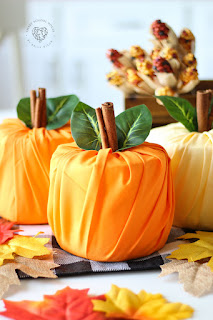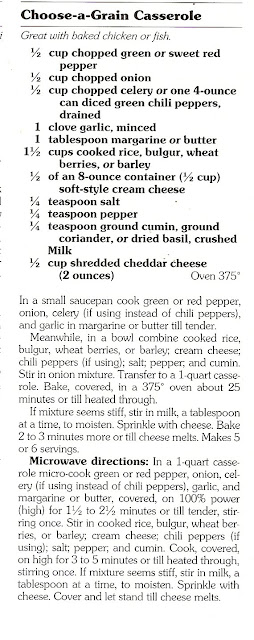Samhain
Samhain (October 31st)
HISTORY
Samhain
to the Celts was their New Year's Eve.
That mysterious moment belonging to neither past nor present, or this
world nor the other. It was a time when
the herds were slaughtered and the meat salted, which also led to the use of
salts in magic ritual as a disinfectant against psychic or spiritual evil. On this night also, the spirits of dead
friends sought the warmth of the Samhain fire and communication with the living.
The
divinatory aspect of Halloween is understandable for two reasons. First, the psychic climates of the season
favored it, and second, the anxiety about the coming winter demanded it. The fertility ritual aspect was reflected in
legends of gods and heroes. As such, it
was a time of deliberate (and tribally purposeful) sexual freedom. That is primarily a Celtic tradition, as many
other superstitions say to refrain from sex for fear that your former (dead)
friends would take over your body and you might have A Change Child.
So,
Halloween was on the one hand a time of propitiation, divination, and
communication with the dead, and on the other, an uninhibited feast of eating,
drinking, and defiant affirmation of life and fertility in the very face of the
closing dark. (Witches Bible Complete
page 122)
"The
feast itself, in the banquet sense, the original food was of course a
proportion of the newly slaughtered cattle, roasted in the purifying Samhain
fire, and doubtless having the nature of ritually offered first fruits. The fact that the priesthood had first claim
on the slaughtered animals for divinatory purposes and that what they did not
use provided a feast for the tribe, points to this." (Witches Bible Complete page 126)
B. THE
ALTAR AND CIRCLE- Remember that these are “should be” and not demanded, and
neither is perfection.
1. Decorate with apples, pomegranates, pumpkins
(as is or cut into jack-o'-lanterns. If
using jack-o'-lanterns, let them mark the four corners), squashes, marigolds,
and chrysanthemums. The altar cloth and
candles should be orange, to symbolize the harvest, the falling leaves, and all
the colors of fall.
2. Foods- turnips, apples, corn, nuts,
gingerbread, pumpkin dishes, meat, pumpkin cookies, candy apples, popcorn, and
candy corn. Note that this is the only Sabbat where meat can be a symbol of the
season since it is slaughter time in rural communities. It is not required.
3. Drinks-cider, the mulled wine
4. The cauldron should be in the north quarter,
filled with firewood.
C. RITUALS
1. This is the time of reflection, of looking
back over the past year and friends who have passed on. Honor them, but do not call them to you. Leave the plate of food outside the home for
the souls of the dead. A candle placed
in the window guides them to the afterlife, varying apples "feeds"
them on their journey.
2. Write on a piece of paper any aspect of your
life you wish to be free of. Such as
anger, baneful habits, disease, or misplaced feelings. Burn it in a ritual. (Solitary Practitioner page 142)
3. Past life regressions are sometimes done in
CIRCLE. This can take a very long time, so I personally recommend either a group
meditation or a separate session outside of the main Samhain celebration.
4. Scry into the past or future in CIRCLE. This
is the time of divination, and whatever method calls to you is acceptable in
your own circle.
5. Return the corn dollies of last year to the
ground. (See Imbolg)
6. Bobbing for apples. There were many divination practices
associated with Halloween, many of which dealt with marriage, health, and the
weather. Ducking for apples was a
marriage divination based on the belief that the first to bite into an Apple
would be the first to marry in the coming year.
This is like the wedding tradition of throwing the bridal bouquet for
women and her garter for men. Apple
peeling was another type of divination to determine how long one's life would
be. The longer the unbroken peel the
longer the life of the one peeling it.
7. Have the high priest dress in "Man in
Black" costume and charcoal for his space.
He leads a dance within the CIRCLE.
8. Divination using tarot cards in CIRCLE. This
can be done to give the whole coven a single divination for the group, or each
member may use their own tools to divine for themselves or others.
9. At the close of the Halloween CIRCLE, which
will be extinguished the altar candles to symbolize the dark half of the year
now beginning.
10. This is an invocation you may use if you wish. Wise
one of the waning moons, goddess of the starry night, I create this fire within
your cauldron to transform that which is plaguing me. May the energies be reversed, from darkness,
light! From bane, good! From death, birth!
11. Carved jack-o'-lanterns. This is a lovely
tradition that can include family members, especially children. Don’t forget to
arrange that all pumpkins (carved or not) are taken to an appropriate setting
such as a wooded area and smashed to give the wild things a treat. You may also
share a beer with the nature spirits if you so desire.
12. Finish any incomplete projects and pay off
lingering bills, if possible, to close out the old year and begin the new year
fresh.
13. Leave food out for the birds and other wild
animals. Donate food or funding to an
animal shelter in honor of the spirit of animals who have died for your
family's nourishment over the year.
14. Put pictures of ancestors who have passed on
your altar for your Sabbat rite. Light a special candle for them, to show them
away to return and celebrate with you.
This is the graves of your ancestors or if this is not possible, the
nearest cemetery. Be still there and listen for the voices of those who have
passed. Leave offerings of food and
drink for them, and for the animals.
15. Have a mask making party in which you create
masks to celebrate and represent your ancestry.
16. Dumb
Feast—This is much more difficult and yet profound than it first might seem.
All guests must RSVP in advance, because one place at the table must be left
empty, with a full place setting before it. From the moment the guests step
through the door, all is silent. All thoughts are centered on the empty place,
symbolizing those who are no longer with us. Seasonally appropriate foods are
served, with care taken that no allergens or harmful substances are included. After
all the food has been served and eaten, the guests leave the dining area in
silence. Socializing and speech may take place only after all have left the
room and the candles have been extinguished.
D.
SYMBOLISM
1. Farewell to the God. The God dies and prepares to be reborn at
Yule.
.2. Time
of sacrifice when animals were slaughtered to insure food throughout the
winter.
3. The feast of the dead, when the veil between
the worlds is thin. We honor the dead and remember them with fondness.


Comments